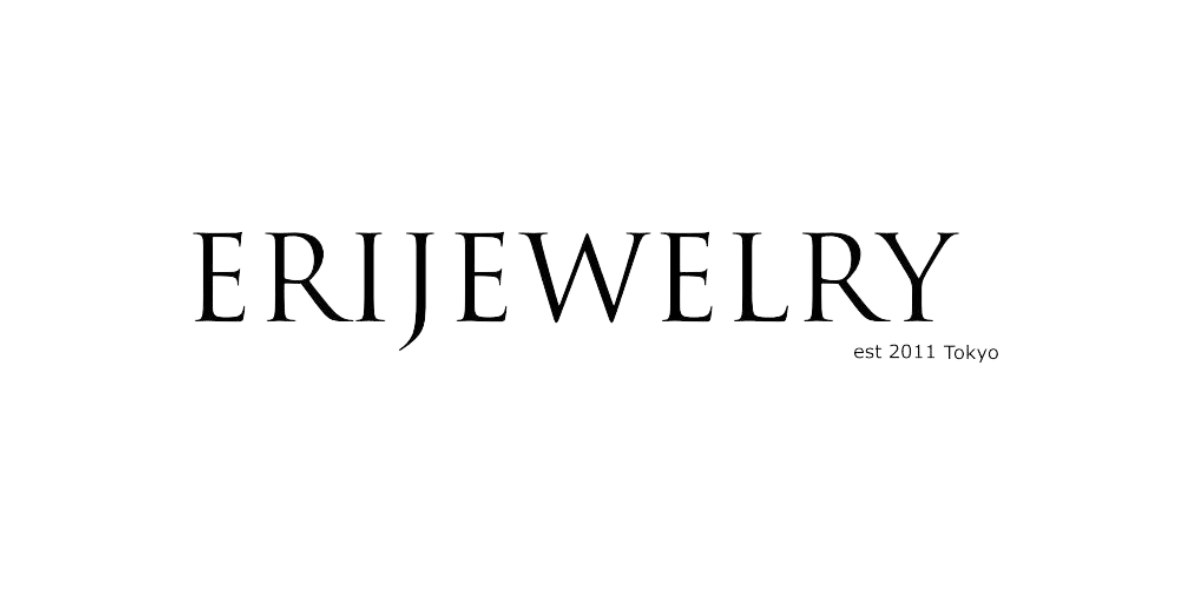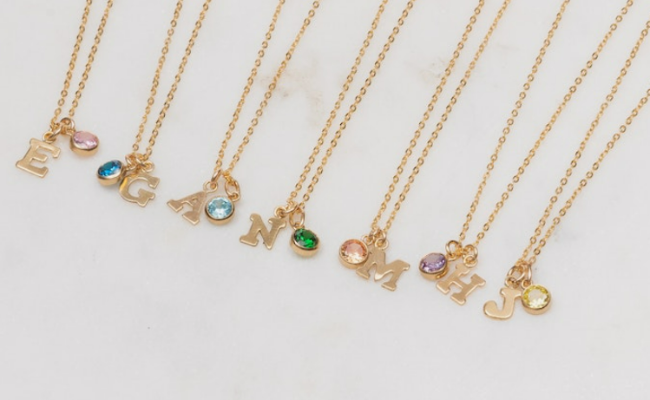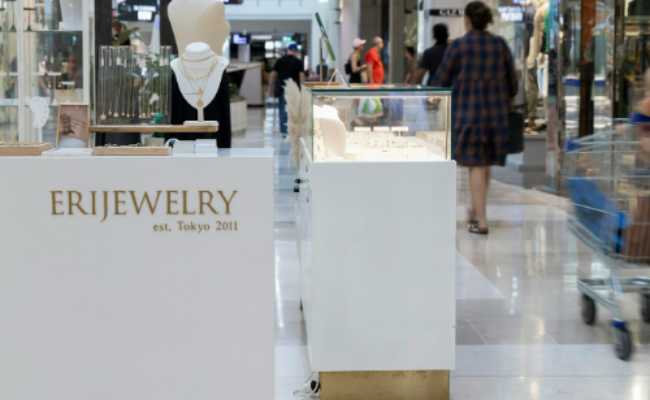
Gold-filled VS Gold-Plated VS Gold Vermeil - What Does Gold Filled Mean
What’s the difference between Gold-filled, Gold-plated and Vermeil?
You may have heard jewellers talk about gold plating, gold-filled and gold vermeil when you buy jewellery. What Does Gold Filled Mean?

First let’s go over each basic definition, then compare them and find out how you can choose which one is best for you!
What is Gold-Plated Jewellery?
Gold-plated jewellery is created by coating base materials such as copper or brass with an extremely thin layer of gold. This process is called electroplating, and the gold content is usually less than 0.05%.

Gold-plating can easily rub off with normal use. It is also more likely to become tarnished quickly and cause skin irritation in people with sensitive skin. While gold itself does not corrode, copper, brass, and other liquid materials in the air, sweat, lotion, and perfume, etc. are particularly affected. Gold-plated jewellery can be much cheaper than other gold jewellery, so it is a good choice for testing of new trends or for just one occasion.
What is Gold Vermeil Jewellery?

Similar to gold-plated jewellery, gold vermeil is when sterling silver, typically marked as 925, is plated with a thin layer of gold, normally with a thickness of 2.5 microns. As sterling silver is a less expensive metal than solid gold, you'll often find gold vermeil jewellery to be more of a budget-friendly option. Unfortunately, after some time, the plating will wear off, so this is something to keep in mind. Vermeil jewellery is a great choice for those who want something to wear casually and who use and style gold jewellery on a day-to-day basis, while still being affordable.
The Difference Between Gold-Plated and Gold Vermeil Jewellery
There are some notable differences between gold-plated and vermeil jewellery. One of the most remarkable is that vermeil will use sterling silver as a base metal, while gold-plated jewellery will use other metals. The thickness of the gold layer is another significant difference. The thickness of the base metal depends on how long the base has stayed in the solution.
- The core metals – Gold-plated items have no restriction regarding the base metal. In contrast, vermeil always has silver as the base metal. This is one of the biggest requirements for vermeil jewellery.
- Plating thickness – According to international standards, the minimum thickness of gold in gold vermeil jewellery must be between 0.0025 millimetres or 2.4 microns. There is no thickness requirement for gold-plated items.
- Price – Gold vermeil jewellery is usually more expensive than normal gold-plated jewellery.
What is Gold-Filled Jewellery?
Gold-filled jewellery is a genuine layer of gold, permanently bonded onto the base metal with heat and pressure. It contains more than 100 times more gold than gold-plated and gold vermeil jewellery, and it is tarnish-resistant, nickel free and hypoallergenic. The gold content is legally required in the US to be at least 5% of the total weight. This makes a big difference in terms of the jewellery's ability to resist wear and tear in the long run. It is extremely durable; it won't chip or flake, and it is tarnish resistant. At ERIJEWELRY, we provide gold filled jewellery.

With proper care, gold-filled jewellery can serve you for a long time. In terms of cost, you should expect a slightly higher price tag, but not as high as solid gold. High-quality gold-filled jewellery can withstand everyday usage without tarnishing. Because it is hypoallergenic, it is also safe for most skin types and won’t prompt a reaction.

Advantages of gold-filled jewellery:
- Good quality – one of the most noticeable advantages of gold-filled jewellery is its durability. These pieces don’t wear out quickly, don’t tarnish and don’t peel or flake off with time.
- Mesmerizing appearance – exceptionally beautiful and one cannot tell the difference between a pure gold ring and gold-filled ring merely by looking at it.
- Affordable Price
- Easy to handle – you can leave your worries behind and keep your jewellery on during your everyday activities, including showers.
- Safe for most sensitive skin – you also don’t have to worry about skin allergies because gold-filled jewellery is hypoallergenic and nickel free.
Explore our Magnifique Collection

Explore our Classe (Pearl) Collection

What About Solid Gold?
Solid gold is the purest form of gold; there is no “filling” or plating whatsoever.
However, solid gold varies by the ratio or amount of gold and alloy present. This is what determines the quality and purity of gold and is known as Karats, denoted by the letter “K”.
The purest form of solid gold is 24k, which denotes the highest value of gold. On the flip side, however, it is too soft to be worked into jewellery and can’t retain its shape. It also scratches easily and becomes unattractive.
To improve its qualities and make it strong and durable, pure gold must be alloyed or combined with other metals to birth a “hybrid” or “improved gold.”
What Does Gold Karat Mean?
As a result of combining gold with other metals, most jewellery you see today is not 100% gold. The purity level of gold is measured using the karat system; this is different from “carat” used in rating diamonds.
- A 14k gold implies that there are 14 parts gold (which is equivalent to 58.3%) and 10 parts alloys (41.7%).
- 18k gold tells you that it contains 18 parts gold (75%) and 6 parts (25%) alloys.
Solid gold, as we mentioned earlier, is the purest form of gold there is, and how much it will sell for is best left to your imagination. So, don’t be surprised when you see a small piece of solid gold jewellery going for hundreds, if not thousands of dollars.
Why Does Gold Have Different Colours?
There are three different colours of gold in the jewellery market today - rose gold, yellow gold, and white gold.
These different colours form as a result of the alloy mixture. In its natural state, gold is yellow - hence, the name, yellow gold.
Rose gold is the resultant combination of 25% copper and other alloys, which gives it a distinct pinkish colour.
White gold has a silver or seemingly platinum colour after mixing it with nickel or palladium. So, when choosing your gold, you may wish to consider your skin tone, clothing, and how appealing the piece is to you.
Choosing What’s Best for You!
What type of jewellery should you buy? Choosing between gold vermeil, gold-plated and gold-filled jewellery.
The best type of gold jewellery that's suited for you depends on the following factors:
- Your budget
- How often do you wear jewellery?
- How well can you maintain your jewellery?
If you can answer these questions, then you should have a smooth ride choosing for a fitting piece.
Gold-filled jewellery is often much more durable than gold vermeil.
Gold-filled is protected from tarnishing and discoloration, since thick layers of gold cover the base metal inside.
On the other hand, gold vermeil is a great choice compared to gold-plated if you tend to be responsive to gold-plated metals, and can be worn more elegantly when the top layer of gold fades.
Vermeil parts are generally made from electroplating, and the minimum amount of gold required is much lower. You want to keep this in mind when trying to decide between vermeil and gold-filled.
By looking at the different qualities of the piece, you can determine whether it conforms to your standards. When you try to decide between gold-filled, gold vermeil and gold-plated, make sure you compare the karat weight of gold, the layer thickness, and the quality of the base metal.
We hope this article helps you make informed decisions and enables you to shop with confidence.






Leave a comment
This site is protected by hCaptcha and the hCaptcha Privacy Policy and Terms of Service apply.